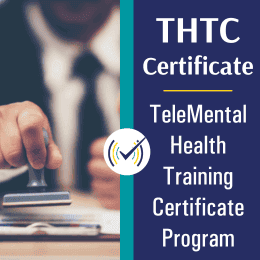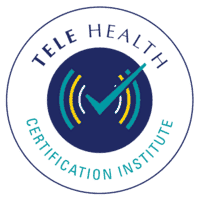RELATING TO THE PUBLIC PEACE, HEALTH, SAFETY AND WELFARE; ENACTING THE NEW MEXICO TELEHEALTH ACT; PROVIDING STANDARDS FOR TELEHEALTH DELIVERY OF HEALTH CARE. BE IT ENACTED BY THE LEGISLATURE OF THE STATE OF NEW MEXICO: Section 1. SHORT TITLE.--This act may be cited as the "New Mexico Telehealth Act". Section 2. FINDINGS AND PURPOSE.-- A. The legislature finds that: (1) lack of primary care, specialty providers and transportation continue to be significant barriers to access to health services in medically underserved rural areas; (2) there are parts of this state where it is difficult to attract and retain health professionals, as well as support local health facilities to provide a continuum of health care; (3) many health care providers in medically underserved areas are isolated from mentors and colleagues and from the information resources necessary to support them personally and professionally; (4) using information technology to deliver medical services and information from one location to another is part of a multifaceted approach to address the problems of provider distribution and the development of health systems in medically underserved areas by improving communication capabilities and providing convenient access to up-to-date information, consultations and other forms of support; (5) the use of telecommunications to deliver health services has the potential to reduce costs, improve quality, change the conditions of practice and improve access to health care in rural, medically underserved areas; and (6) telehealth will assist in maintaining or improving the physical and economic health of medically underserved communities by keeping the source of medical care in the local area, strengthening the health infrastructure and preserving health-care-related jobs. B. The purpose of the New Mexico Telehealth Act is to provide a framework for health care providers to follow in providing telehealth to New Mexico citizens when it is impractical for those citizens to receive health care consultations face-to-face with health care providers. Section 3. DEFINITIONS.--As used in the New Mexico Telehealth Act: A. "health care provider" means a person licensed to provide health care to patients in New Mexico, including: (1) an optometrist; (2) a chiropractic physician; (3) a dentist; (4) a physician; (5) a podiatrist; (6) an osteopathic physician; (7) a physician assistant; (8) a certified nurse practitioner; (9) a physical therapist; (10) an occupational therapist; (11) a speech-language pathologist; (12) a doctor of oriental medicine; (13) a nutritionist; (14) a psychologist; (15) a certified nurse-midwife; (16) a clinical nurse specialist; (17) a registered nurse; (18) a dental hygienist; or (19) a pharmacist; B. "originating site" means a place where a patient may receive health care via telehealth. An originating site may include: (1) a licensed inpatient center; (2) an ambulatory surgical or treatment center; (3) a skilled nursing center; (4) a residential treatment center; (5) a home health agency; (6) a diagnostic laboratory or imaging center; (7) an assisted living center; (8) a school-based health program; (9) a mobile clinic; (10) a mental health clinic; (11) a rehabilitation or other therapeutic health setting; or (12) the patient's residence; and C. "telehealth" means the use of electronic information, imaging and communication technologies, including interactive audio, video, data communications as well as store-and-forward technologies, to provide and support health care delivery, diagnosis, consultation, treatment, transfer of medical data and education when distance separates the patient and the health care provider. Section 4. TELEHEALTH AUTHORIZED--PROCEDURE.--The delivery of health care via telehealth is recognized and encouraged as a safe, practical and necessary practice in New Mexico. No health care provider or operator of an originating site shall be disciplined for or discouraged from participating in telehealth pursuant to the New Mexico Telehealth Act. In using telehealth procedures, health care providers and operators of originating sites shall comply with all applicable federal and state guidelines and shall follow established federal and state rules regarding security, confidentiality and privacy protections for health care information. Section 5. SCOPE OF ACT.-- A. The New Mexico Telehealth Act does not alter the scope of practice of any health care provider or authorize the delivery of health care services in a setting, or in a manner, not otherwise authorized by law. B. Although the use of telehealth is strongly encouraged, nothing in the New Mexico Telehealth Act requires a health insurer, health maintenance organization, managed care organization, provider service organization or the state's medical assistance program to include telehealth within the scope of the plan or policy offered by that entity RELATING TO THE PUBLIC PEACE, HEALTH, SAFETY AND WELFARE; ENACTING THE NEW MEXICO TELEHEALTH ACT; PROVIDING STANDARDS FOR TELEHEALTH DELIVERY OF HEALTH CARE. BE IT ENACTED BY THE LEGISLATURE OF THE STATE OF NEW MEXICO: Section 1. SHORT TITLE.--This act may be cited as the "New Mexico Telehealth Act". Section 2. FINDINGS AND PURPOSE.-- A. The legislature finds that: (1) lack of primary care, specialty providers and transportation continue to be significant barriers to access to health services in medically underserved rural areas; (2) there are parts of this state where it is difficult to attract and retain health professionals, as well as support local health facilities to provide a continuum of health care; (3) many health care providers in medically underserved areas are isolated from mentors and colleagues and from the information resources necessary to support them personally and professionally; (4) using information technology to deliver medical services and information from one location to another is part of a multifaceted approach to address the problems of provider distribution and the development of health systems in medically underserved areas by improving communication capabilities and providing convenient access to up-to-date information, consultations and other forms of support; (5) the use of telecommunications to deliver health services has the potential to reduce costs, improve quality, change the conditions of practice and improve access to health care in rural, medically underserved areas; and (6) telehealth will assist in maintaining or improving the physical and economic health of medically underserved communities by keeping the source of medical care in the local area, strengthening the health infrastructure and preserving health-care-related jobs. B. The purpose of the New Mexico Telehealth Act is to provide a framework for health care providers to follow in providing telehealth to New Mexico citizens when it is impractical for those citizens to receive health care consultations face-to-face with health care providers. Section 3. DEFINITIONS.--As used in the New Mexico Telehealth Act: A. "health care provider" means a person licensed to provide health care to patients in New Mexico, including: (1) an optometrist; (2) a chiropractic physician; (3) a dentist; (4) a physician; (5) a podiatrist; (6) an osteopathic physician; (7) a physician assistant; (8) a certified nurse practitioner; (9) a physical therapist; (10) an occupational therapist; (11) a speech-language pathologist; (12) a doctor of oriental medicine; (13) a nutritionist; (14) a psychologist; (15) a certified nurse-midwife; (16) a clinical nurse specialist; (17) a registered nurse; (18) a dental hygienist; or (19) a pharmacist; B. "originating site" means a place where a patient may receive health care via telehealth. An originating site may include: (1) a licensed inpatient center; (2) an ambulatory surgical or treatment center; (3) a skilled nursing center; (4) a residential treatment center; (5) a home health agency; (6) a diagnostic laboratory or imaging center; (7) an assisted living center; (8) a school-based health program; (9) a mobile clinic; (10) a mental health clinic; (11) a rehabilitation or other therapeutic health setting; or (12) the patient's residence; and C. "telehealth" means the use of electronic information, imaging and communication technologies, including interactive audio, video, data communications as well as store-and-forward technologies, to provide and support health care delivery, diagnosis, consultation, treatment, transfer of medical data and education when distance separates the patient and the health care provider. Section 4. TELEHEALTH AUTHORIZED--PROCEDURE.--The delivery of health care via telehealth is recognized and encouraged as a safe, practical and necessary practice in New Mexico. No health care provider or operator of an originating site shall be disciplined for or discouraged from participating in telehealth pursuant to the New Mexico Telehealth Act. In using telehealth procedures, health care providers and operators of originating sites shall comply with all applicable federal and state guidelines and shall follow established federal and state rules regarding security, confidentiality and privacy protections for health care information. Section 5. SCOPE OF ACT.-- A. The New Mexico Telehealth Act does not alter the scope of practice of any health care provider or authorize the delivery of health care services in a setting, or in a manner, not otherwise authorized by law. B. Although the use of telehealth is strongly encouraged, nothing in the New Mexico Telehealth Act requires a health insurer, health maintenance organization, managed care organization, provider service organization or the state's medical assistance program to include telehealth within the scope of the plan or policy offered by that entity RELATING TO THE PUBLIC PEACE, HEALTH, SAFETY AND WELFARE; ENACTING THE NEW MEXICO TELEHEALTH ACT; PROVIDING STANDARDS FOR TELEHEALTH DELIVERY OF HEALTH CARE. BE IT ENACTED BY THE LEGISLATURE OF THE STATE OF NEW MEXICO: Section 1. SHORT TITLE.--This act may be cited as the "New Mexico Telehealth Act". Section 2. FINDINGS AND PURPOSE.-- A. The legislature finds that: (1) lack of primary care, specialty providers and transportation continue to be significant barriers to access to health services in medically underserved rural areas; (2) there are parts of this state where it is difficult to attract and retain health professionals, as well as support local health facilities to provide a continuum of health care; (3) many health care providers in medically underserved areas are isolated from mentors and colleagues and from the information resources necessary to support them personally and professionally; (4) using information technology to deliver medical services and information from one location to another is part of a multifaceted approach to address the problems of provider distribution and the development of health systems in medically underserved areas by improving communication capabilities and providing convenient access to up-to-date information, consultations and other forms of support; (5) the use of telecommunications to deliver health services has the potential to reduce costs, improve quality, change the conditions of practice and improve access to health care in rural, medically underserved areas; and (6) telehealth will assist in maintaining or improving the physical and economic health of medically underserved communities by keeping the source of medical care in the local area, strengthening the health infrastructure and preserving health-care-related jobs. B. The purpose of the New Mexico Telehealth Act is to provide a framework for health care providers to follow in providing telehealth to New Mexico citizens when it is impractical for those citizens to receive health care consultations face-to-face with health care providers. Section 3. DEFINITIONS.--As used in the New Mexico Telehealth Act: A. "health care provider" means a person licensed to provide health care to patients in New Mexico, including: (1) an optometrist; (2) a chiropractic physician; (3) a dentist; (4) a physician; (5) a podiatrist; (6) an osteopathic physician; (7) a physician assistant; (8) a certified nurse practitioner; (9) a physical therapist; (10) an occupational therapist; (11) a speech-language pathologist; (12) a doctor of oriental medicine; (13) a nutritionist; (14) a psychologist; (15) a certified nurse-midwife; (16) a clinical nurse specialist; (17) a registered nurse; (18) a dental hygienist; or (19) a pharmacist; B. "originating site" means a place where a patient may receive health care via telehealth. An originating site may include: (1) a licensed inpatient center; (2) an ambulatory surgical or treatment center; (3) a skilled nursing center; (4) a residential treatment center; (5) a home health agency; (6) a diagnostic laboratory or imaging center; (7) an assisted living center; (8) a school-based health program; (9) a mobile clinic; (10) a mental health clinic; (11) a rehabilitation or other therapeutic health setting; or (12) the patient's residence; and C. "telehealth" means the use of electronic information, imaging and communication technologies, including interactive audio, video, data communications as well as store-and-forward technologies, to provide and support health care delivery, diagnosis, consultation, treatment, transfer of medical data and education when distance separates the patient and the health care provider. Section 4. TELEHEALTH AUTHORIZED--PROCEDURE.--The delivery of health care via telehealth is recognized and encouraged as a safe, practical and necessary practice in New Mexico. No health care provider or operator of an originating site shall be disciplined for or discouraged from participating in telehealth pursuant to the New Mexico Telehealth Act. In using telehealth procedures, health care providers and operators of originating sites shall comply with all applicable federal and state guidelines and shall follow established federal and state rules regarding security, confidentiality and privacy protections for health care information. Section 5. SCOPE OF ACT.-- A. The New Mexico Telehealth Act does not alter the scope of practice of any health care provider or authorize the delivery of health care services in a setting, or in a manner, not otherwise authorized by law. B. Although the use of telehealth is strongly encouraged, nothing in the New Mexico Telehealth Act requires a health insurer, health maintenance organization, managed care organization, provider service organization or the state's medical assistance program to include telehealth within the scope of the plan or policy offered by that entity Psychologists We are not aware of any specific rules and regulations of the practice of telemental health services for Psychologists. Psychiatrists Psychiatrists Let us know of any updates: Over a phone call to the board’s office, it was stated that (as of 2/7/17) since telehealth services are not mentioned in the scope of practice it is not allowed. New Mexico Boards & Commissions Refer to the source provided for all requirements and limitations. NM Administrative Code 16.10.8.8(L) “Prescribing, dispensing or administering drugs or medical supplies to a patient when there is no established physician-patient relationship, including prescribing over the internet or via other electronic means that is based solely on an on-line questionnaire is unprofessional conduct, except for: “As a party state to the Nurse Licensure Compact (NLC), New Mexico issues multistate licenses to nurses and applicants who reside in the state and recognizes multistate licenses issued by other party states, for practice in New Mexico. A nurse holding a multistate license is entitled to practice in any NLC party state, but must comply at all times with the laws of the state where he or she is currently practicing.” “It should be noted that not every state in the US is an NLC party state; a map of participating states, as well as further resources related to the NLC, are available on the Nurse Licensure Compact website.” Refer to the source provided for all requirements and limitations. NM Administrative Code 16.10.8.8(L) “Prescribing, dispensing or administering drugs or medical supplies to a patient when there is no established physician-patient relationship, including prescribing over the internet or via other electronic means that is based solely on an on-line questionnaire is unprofessional conduct, except for: Source: NM Administrative Code 8.310.2.12(M) "(2) The distant-site is the location where the consulting telemedicine provider is physically located at the time of the telemedicine service. All services are covered to the same extent the service and the provider are covered when not provided through telemedicine. For these services, the use of the telemedicine communications system fulfills the requirement for a face-to-face encounter." Refer to the source provided for all requirements and limitations. Source: NM Statutes Annotated. Sec. 59A-22-49.3(A) "A. An individual or group health insurance policy, health care plan, or certificate of health insurance that is delivered, issued for delivery or renewed in this state shall allow covered benefits to be provided through telemedicine services. Coverage for health care services provided through telemedicine shall be determined in a manner consistent with coverage for health care services provided through in-person consultation." Refer to the source provided for all requirements and limitations. Source: NM Statutes Annotated. Sec. 59A-22-49.3(A) "A. An individual or group health insurance policy, health care plan, or certificate of health insurance that is delivered, issued for delivery, or renewed in this state shall allow covered benefits to be provided through telemedicine services. Coverage for health care services provided through telemedicine shall be determined in a manner consistent with coverage for health care services provided through in-person consultation." Refer to the source provided for all requirements and limitations. We are not aware of any permission that allows for services delivered by out-of-state providers.Counselors
Social Workers
Marriage and Family Therapists
Psychologists
Psychiatrists
New Mexico Professional Regulation/Health & Safety Online Prescribing
Nurses
New Mexico Professional Regulation/Health & Safety Online Prescribing
Medicaid Telehealth Parity Law
Private Pay Telehealth Parity Law
Payment Parity
Permission for the Temporary Practice of Clinicians Licensed Outside the State
New Mexico
Note: As this is a free resource and Rules and Regulations regarding Telehealth are always changing, we appreciate any updates or corrections. They can be emailed to us at [email protected] with a link to the source or a citation of the rule or regulation.
Telemental health is not a separate service from mental health services. All state licensing boards require that licensed clinicians follow all the regulations for practicing under their license no matter what medium of communication is used. All licensing boards also require that clinicians only practice within the boundaries of their competence. This usually requires education, continuing education, and/or supervision in telemental health. Complete our telehealth training program to cover all the essential competencies of providing telemental health services and earn the THTC (Telemental Health Training Certificate).




The course was so informative and I was glued to my screen for the entire duration. I received so much knowledge concerning ethics in telehealth and I am greatly encouraged to read about all the standards and policies that pertain to my practice. Thank you!.